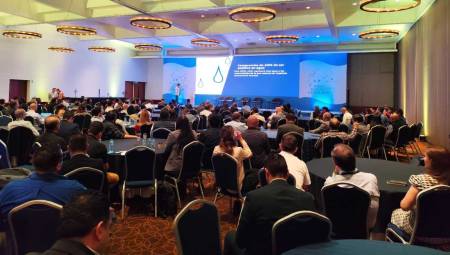 Mexico. Collaboration is a buzzword, as was "Thinking outside the box" or as is "innovation", so beyond following meaningless trends, it would be really important to assimilate it as a process of contribution; is the creation from the meeting.
Mexico. Collaboration is a buzzword, as was "Thinking outside the box" or as is "innovation", so beyond following meaningless trends, it would be really important to assimilate it as a process of contribution; is the creation from the meeting.
With technology unleashing traditional office traps, organizations are realizing that facilities must be designed so that people can collaborate. Collaboration enables rapid sharing of knowledge, increased workflow efficiency, strategic commitments, and a sense of community.
If in the internal process of establishing relationships within a company the game of "success" (which has as opposed to failure) is set aside and ways of making contribution (which does not have an opposite) are sought, then it can focus on shared objectives and visions from the perspective of contribution for maximum effectiveness.
Therefore, the Mexican company Multimedia published what it considers the 10 commandments for collaboration in your company to be really effective and productive:
- Be explicit. Never say "we'll do X thing" because then it will never happen. Whenever there is a follow-up issue, indicate the person responsible and the expiration date.
- Learn to manage conflict. Considered a corporate dysfunction, the fear of conflict slows down actions and distances the fulfillment of objectives. Conflict is important – handling it skillfully can expose major problems, help team members improve their performance, and bring people closer together.
- Create an online workspace, together: Don't make your online workspace the sole responsibility of the administrative assistant. Instead, work as a team to identify the structure and learn the collaboration software. This joint process will lead to greater adoption and accountability.
- Ask questions, don't assume. Asking questions instead of making assumptions and actively listening to your team members can not only create a culture of camaraderie, but also provide transparency in your responsibilities and expectations. It can also reduce stress levels and tensions that can sometimes arise when working closely with others.
- Be reliable. Having a group of people with different ambitions and egos will mean that everyone won't always agree. Reliability creates trust, and without it, you don't really have a team, you just have a bunch of people reluctantly working together. Being part of a team means having to rely on others to keep their end of the bargain. The success of a team depends on the efforts and contribution of all its members. This is especially the case for teams that have members working remotely.
- Use technology and take advantage of it. The reasons for using collaboration tools are pretty straightforward. As a vital element of effective collaboration in the workplace, they offer their team a centralized solution where all project work can be announced, shared, updated and executed.
- Use the cloud. Communication and collaboration are now easier than ever thanks to cloud technology. Employees can access and use data wherever there is an internet connection, allowing them to work from home, on the road, or even abroad. Fortunately, benefiting from the cloud doesn't require an all-or-nothing approach. Instead, adopting a hybrid cloud strategy allows you to integrate the public cloud with your on-premises solutions. Without sacrificing security or simplicity, you can use this strategy to harness the collaborative power of the cloud and break down barriers between teams.
- Let people think alone. Not everything is solved with joints. Concentration and flow are just as important to the workplace as collaboration. Just as ideas should be exchanged, there should also be time and space for the creation of new ideas, which is best done alone. Achieving that balance can be largely achieved through the strategic design of the office, which then extends to the organization's work culture. People are most creative when they enjoy privacy and freedom from interruption.
- Use video conferencing. In the modern mobile workforce, video calling, screen sharing, virtual meeting rooms, and online chat as what Multimedia-Video offers are the cornerstones of collaboration. While one is no better than the other, it can be daunting to find the best way to facilitate effective and productive collaboration when no one is under the same roof; having employees collaborate virtually is similar to doing it in person, which means you have the tools and skills, you just have to use them differently.
- Unleash the power of software. Today there are hundreds of digital and virtual tools to accelerate collaboration: think of google's suite that allows you to chat or make collaborative texts, presentations and spreadsheets or an internal collaboration platform cy project tracking with chat included as Slack; on the other hand HelloSign allows you to get the signatures you need without having to print, sign and re-scan documents This is ideal for remote organizations working with freelancers and contract workers.- Publicidad -
In fact, just do a search for your need for collaboration and the browser will offer you dozens of free, paid, open source, cloud-based or deployed options on your servers. There is no longer a pretext, the world has opened up and we no longer depend on a physical and fixed space of work. Remote collaboration is at your fingertips.















